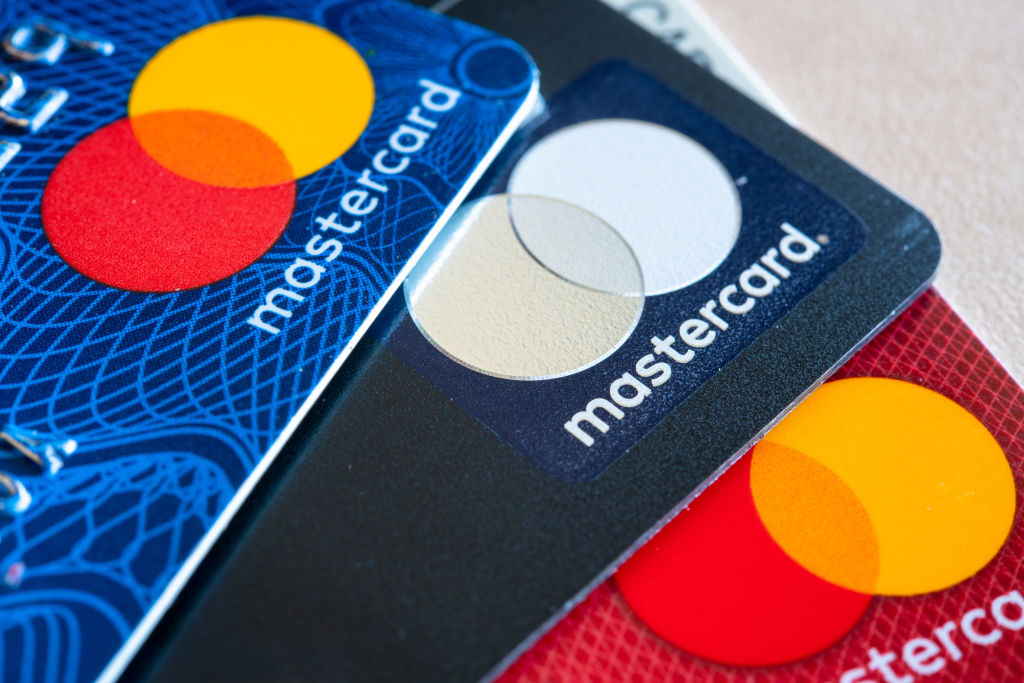What Is a Brand Positioning Map and Why Does It Matter?

A brand positioning map is a valuable tool that helps you visualize where your brand stands in relation to competitors based on key attributes like price and quality. By plotting these factors, you can better understand consumer perceptions and identify gaps in the market. This insight is essential for refining your strategy and ensuring your brand remains relevant. To fully grasp its importance, consider how you can leverage this map to improve your market approach.
Key Takeaways

- A brand positioning map visually represents a brand’s market position relative to its competitors based on key attributes.
- It helps identify consumer perceptions, market gaps, and unique differentiation opportunities.
- Analyzing the map reveals competitive advantages and informs tailored strategies for brand management.
- Regular updates to the map ensure strategies remain relevant and respond to market dynamics.
- A clear brand positioning enhances messaging consistency, builds trust, and fosters customer loyalty.
Understanding Brand Positioning Maps

Grasping Brand Positioning Maps is essential for businesses aiming to navigate the competitive terrain effectively. A brand positioning map visually represents a brand’s position in the marketplace relative to competitors based on two key attributes, often depicted in a perceptual map.
The X and Y axes typically highlight important criteria, such as affordability versus luxury or professionalism versus friendliness. By analyzing this brand positioning matrix, you can identify positioning gaps in the market, informing strategic decisions for targeting new customer segments.
Creating a brand positioning map involves selecting relevant attributes, plotting your brand and competitors based on market data, and analyzing the results. This ongoing process aids in managing your brand and communicating insights about brand perceptions to stakeholders clearly.
Importance of Brand Positioning Maps

Brand positioning maps play a vital role in shaping marketing strategies by providing a clear visualization of where a brand stands in relation to its competitors. They help you identify unique differentiation opportunities and market gaps.
Here are four key reasons why they matter:
- Consumer Insights: They facilitate the analysis of consumer perceptions, allowing you to comprehend your position in the marketplace.
- Competitive Advantage: By uncovering areas of competitive advantage, you can better tailor your strategies.
- Market Segmentation: They help identify underserved market segments, enhancing your product development efforts.
- Adaptability: Regularly updating and analyzing your perceptual positioning map is critical for maintaining relevance in a swiftly changing market environment.
Grasping how to create a perceptual map is vital for effective perceptual map marketing.
Steps to Create a Brand Positioning Map

To create a brand positioning map, you need to start by defining key attributes that matter most to your brand and customers, such as affordability and quality.
Next, analyze the competitive environment by gathering data on both your brand and its competitors, which will help you accurately place each on the map.
This process not solely clarifies your brand’s position but furthermore highlights opportunities for improvement within the marketplace.
Define Key Attributes
Identifying key attributes is a crucial step in creating an effective brand positioning map. To define these attributes, focus on the elements that matter most in your market. Here’s how to get started:
- Select two relevant attributes: Consider dimensions like affordability versus luxury or friendliness versus professionalism.
- Gather data: Assess your brand and competitors’ performances on these attributes through market research and consumer feedback.
- Draw the axes: Label your blank perceptual map with the chosen attributes for clarity.
- Plot data points: Use distinct markers to illustrate your brand’s position versus competitors on the perceptual map brand.
Analyze Competitive Landscape
Analyzing the competitive terrain is essential for effectively positioning your brand within the market, as it helps you understand where you stand in relation to your competitors. Start by gathering data on competitors through market research, surveys, and social listening tools. Then, scale this data to create a standardized format for easy comparison. Next, draw and label the axes of your positioning map with relevant attributes like affordability and quality.
Here’s a simple overview of the process:
| Step | Description | Purpose |
|---|---|---|
| Gather Data | Research competitors’ performance | Understand market dynamics |
| Scale Data | Convert raw info into a standardized format | Guarantee clarity in comparison |
| Draw & Label Axes | Define relevant attributes on the map | Facilitate effective visualization |
| Analyze the Map | Identify clusters, outliers, and market gaps | Inform strategic decisions |
Key Attributes to Consider

When considering key attributes for your brand positioning map, focus on important factors like price, quality, and customer service, as these directly affect consumer choices.
You should likewise incorporate competitive benchmarking attributes, which help you understand your market position relative to competitors.
Essential Positioning Factors
Effective brand positioning requires careful evaluation of key attributes that can influence consumer perceptions and choices.
To create an effective brand positioning map, focus on attributes that resonate with your target audience. Here are four crucial positioning factors to take into account:
- Price: Understand how your pricing compares to competitors, as it directly affects consumer choice.
- Quality: Assess the perceived quality of your offerings, which can differentiate your brand in the market.
- Customer Service: Evaluate the level of service you provide, impacting customer loyalty and satisfaction.
- Innovation: Reflect on how your brand stands regarding innovation, as it can attract a forward-thinking audience.
Identifying these attributes can reveal strategic opportunities for enhancing your offerings and targeting new customer segments effectively.
Competitive Benchmarking Attributes
Competitive benchmarking attributes play a crucial role in grasping how your brand stacks up against others in the market. Key attributes to evaluate include price, quality, features, brand reputation, and customer service.
By identifying these factors, you can effectively plot your brand on a positioning map, showcasing your competitive stance. For example, using axes like affordability versus luxury helps visualize where you fit in relation to competitors.
Furthermore, perceiving customer perceptions around innovation versus tradition can provide insights into how your brand differentiates itself and aligns with target markets.
Regularly reassessing these attributes keeps your brand responsive to market changes and consumer preferences, thereby enhancing your strategic positioning and ensuring you stay relevant in a dynamic environment.
Analyzing Competitors on the Map

Analyzing competitors on the brand positioning map provides valuable insights that can shape your business strategy. By plotting competitors based on key attributes, you can quickly assess your market position.
Here are four critical aspects to take into account:
- Identify Unique Selling Propositions: Recognize what differentiates your brand from others.
- Spot Market Clusters: Detect segments with high brand concentration, indicating potential saturation.
- Inform Pricing Strategies: Understand competitor pricing to adjust your own effectively.
- Guide Product Development: Use insights to refine features and messaging that resonate with your target audience.
Identifying Positioning Gaps

Identifying positioning gaps on a brand positioning map allows you to uncover opportunities that your competitors may have overlooked. By plotting brands based on key attributes, you can clearly see areas where consumer perceptions are underserved.
For instance, if most brands cluster around a particular price range, you might find an empty space indicating a potential market niche for a premium or budget-friendly product. These gaps signal opportunities for new product development or repositioning existing offerings.
Filling these gaps can provide strategic advantages, enabling you to target underserved segments with customized messaging that aligns with specific consumer needs.
Regularly updating your brand positioning map helps guarantee your strategies remain relevant and responsive to market dynamics, allowing for proactive adaptation to new opportunities.
Crafting a Positioning Statement

Crafting a positioning statement is essential for any brand looking to clearly communicate its unique value in the marketplace.
A strong positioning statement articulates your brand’s value proposition and should include:
- Target Market: Identify who your audience is to tailor your message effectively.
- Competitive Set: Analyze your competitors to determine what makes your brand stand out.
- Unique Claim/Benefit: Clearly define what sets your brand apart from others in your category.
- Reason to Believe: Provide support points that validate your unique claim, ensuring it’s realistic and deliverable.
Developing Effective Brand Messaging

When you develop effective brand messaging, it’s crucial to guarantee that it aligns seamlessly with your brand positioning statement, as this consistency reinforces your unique value proposition. Strong messaging incorporates a memorable strapline or tagline that encapsulates your brand’s essence, enhancing recall and recognition. Focus on features that matter to your target audience, ensuring relevance to their needs. Credibility in your messaging comes from truthful communication that resonates with customers, aligning your claims with their values. Consistent communication across multiple channels builds trust and strengthens loyalty, which is important for long-term brand management.
| Element | Purpose | Example |
|---|---|---|
| Strapline | Encapsulates brand essence | Nike |
| Audience Focus | Highlights relevant features | “Eco-friendly materials” |
| Credibility | Builds trust through truthfulness | “100% satisfaction guaranteed” |
Conclusion

In summary, a brand positioning map is a crucial tool for visualizing where your brand stands in relation to competitors. By identifying key attributes and analyzing market gaps, you can strategically tailor your messaging and offerings. This process not just helps you understand consumer perceptions but additionally guides you in crafting a clear positioning statement. Ultimately, leveraging a brand positioning map enables you to improve your brand’s relevance and maintain a competitive edge in a dynamic marketplace.
Image Via Envato
This article, "What Is a Brand Positioning Map and Why Does It Matter?" was first published on Small Business Trends
What's Your Reaction?
 Like
0
Like
0
 Dislike
0
Dislike
0
 Love
0
Love
0
 Funny
0
Funny
0
 Angry
0
Angry
0
 Sad
0
Sad
0
 Wow
0
Wow
0
















































![Bang finds catharsis in new track “Between Us” [Music Video]](https://earmilk.com/wp-content/uploads/2025/08/bang-800x379.jpg)










































